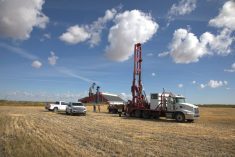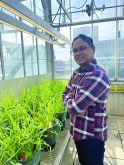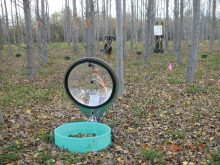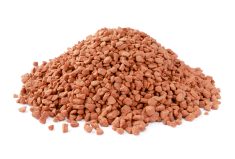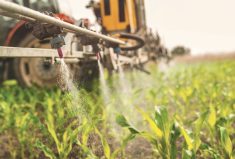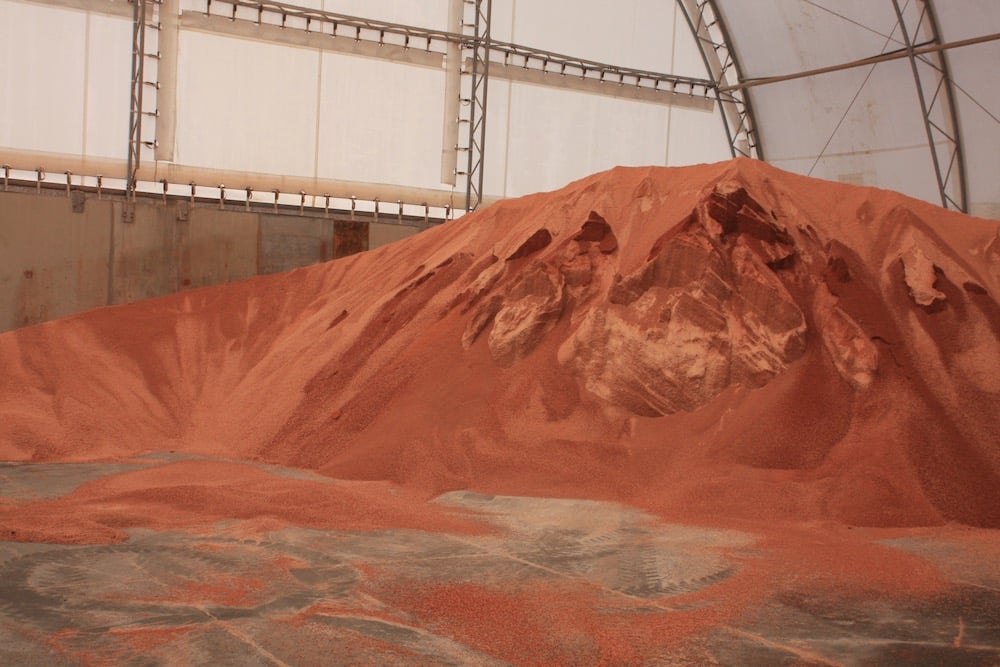A Vancouver startup says it has created a “sustainable smart fertilizer” with a product made out of the hulls of lentils and peas.
Lucent BioSciences says its product, called Soileos, drives an “on-demand” delivery of nutrients to plants while reducing farmers’ carbon footprint. And because it is made with cellulose, it is not water soluble and so the micronutrients bound to it don’t leach away.
The company has been testing the product on fields throughout Canada and the U.S. Midwest over the past year.
“The results of the field trials are outstanding,” said Michael Riedijk, Lucent’s president and CEO.
“It shows there are exciting opportunities for innovation in agriculture that combine sustainability with improved crop quality and yield.”
Soileos has attracted a couple of high-profile backers. Protein Industries Canada (the federally funded “supercluster”) awarded the company a $1.25-million grant last year to scale its operations while Regina pulse trader and ingredient maker AGT Foods and Ingredients has provided a cash contribution as well as supplying pea and lentil hulls.

Lucent BioSciences says small-plot research trials on 50 farms delivered impressive results — yield gains of up to 45 per cent for vegetables and up to 20 per cent on crops such as corn, canola, lentils and wheat.
This year, it is running 40 demonstration-scale trials with farmer partners using standard application equipment. Despite the drought, early results are encouraging, said Jason McNamee, the company’s co-founder and chief product officer.
He said the cellulose made from the hulls binds the micronutrients, keeping them in the soil and available to crops.
“Our product is essentially bioavailable micronutrients — which currently include iron, zinc and manganese — that are attached to cellulose in such a way that they’re bound too tightly to leach but not so tightly that the plant cannot get at them,” he said.
Read Also

Farming Smarter receives financial boost from Alberta government for potato research
Farming Smarter near Lethbridge got a boost to its research equipment, thanks to the Alberta government’s increase in funding for research associations.
“The (microbial) community in the soil needs a source of carbon, which is what cellulose is. So we’re essentially feeding the community and the community does the work of transferring the nutrients to your crop.”
That said, micronutrients are a controversial area with many agronomists and soil experts saying farmers should proceed with caution before spending big bucks on them.
But Riedijk said the method used in Soileos can work for macronutrients and his goal is to develop one for nitrogen.
“What we really want to get to is a non-leaching, cellulose-bound nitrogen and we feel we can do that,” he said. “That’s still a few years out, but we have a fairly clear road map around that.”
It would be a win for both farmers and the environment if the Soileos process could be applied to macronutrients, said McNamee.
“With the current suite of conventional granular or liquid fertilizers, if the conditions aren’t optimal then it’s gone — you’ve thrown that money out the window,” he said. “They’re liquid soluble so… they’re getting leached out and are not available to your plants anymore.
“Our material is water insoluble so it’s going to stay in the soil. If it doesn’t get used up that year, which we expect it to, that’s fine. If you overapply our material it’s not going to harm your crop whereas I’d say if you did it with other (fertilizers) it would hurt the crop.”
Meanwhile, there’s renewed interest in micronutrients, said McNamee.
“In the past five to seven years we’ve seen a renewed or enhanced interest in what zinc and iron can do for a crop, or how can we apply manganese and at which time and with which sources and so forth,” he said.
Delivering them in a new way also holds a lot of promise, he said.
“A lot of producers use a micronutrient supplement of some sort but the current suite of (manufacturing) technologies is old, it was developed primarily before and during the Second World War,” he said. “There’s been no real innovation in that space until this and that’s actually one of the reasons we chose micronutrients as our first product.”
Soileos is currently available in powdered form and is sold in one-pound bags targeted for home and garden use. It can be incorporated into other fertilizers (its recommended application rate is 10 to 20 pounds per acre depending on soil tests).
However, the company has developed a pellet version that can be applied with the same kind of machinery used to apply granular fertilizer. The pellets have been used in trials this year.
“In the trials we’re doing this year in Alberta, we’re running the material through an air seeder going into the seed row, so it’s going into the furrow with the seed,” said McNamee.
“That’s different from most fertilizers which get side banded because of their salt content. Ours has no salt so it works better if we get it as close to the seed as possible.”
Riedijk said his company is in talks with some distributors with the hope of bringing it to market next year. It’s also looking at licensing its technology to other fertilizer makers.
“They may want to create a specific blend in their region for their soil type and we provide the product as an ingredient or we create a specific proprietary blend for the distributor so they can position in the market,” he said.




